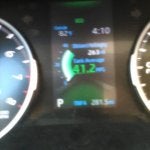We traded our 2021 Honda Odyssey for a new, loaded, 2024 Rav4 Prime. We got $28,000 trade in on a $51,600 price. Nice vehicle, I enjoyed the quick acceleration and having it full electric for daily driving. But 9 months and 18,000 miles later we traded the Rav for a new loaded 2025 Odyssey. We got $45,000 for the Rav. First time I ever got a check back from the dealer when buying a new vehicle. And a check back from our insurance agency. The reason we traded is 1) after a 5000 mile trip we found the seats to be uncomfortable after 5 or more hours of driving, 2) we missed the large interior of a minivan for both passengers and cargo, 3) overall mileage wasn't as good as we thought it would be (34mpg on the trip), 4) only 3,500 miles of the 18,000 miles were fully electric so overall fuel costs were more than we expected.
I still want an EV but I guess I will have to wait a bit while until they evolve a bit more, maybe one that has a 100 mile battery range and a gas driven 35kw generator system like the concept car I saw last week.
The Primes are nice for people that commute daily and can take better advantage of the fully EV ability.
I still want an EV but I guess I will have to wait a bit while until they evolve a bit more, maybe one that has a 100 mile battery range and a gas driven 35kw generator system like the concept car I saw last week.
The Primes are nice for people that commute daily and can take better advantage of the fully EV ability.






